

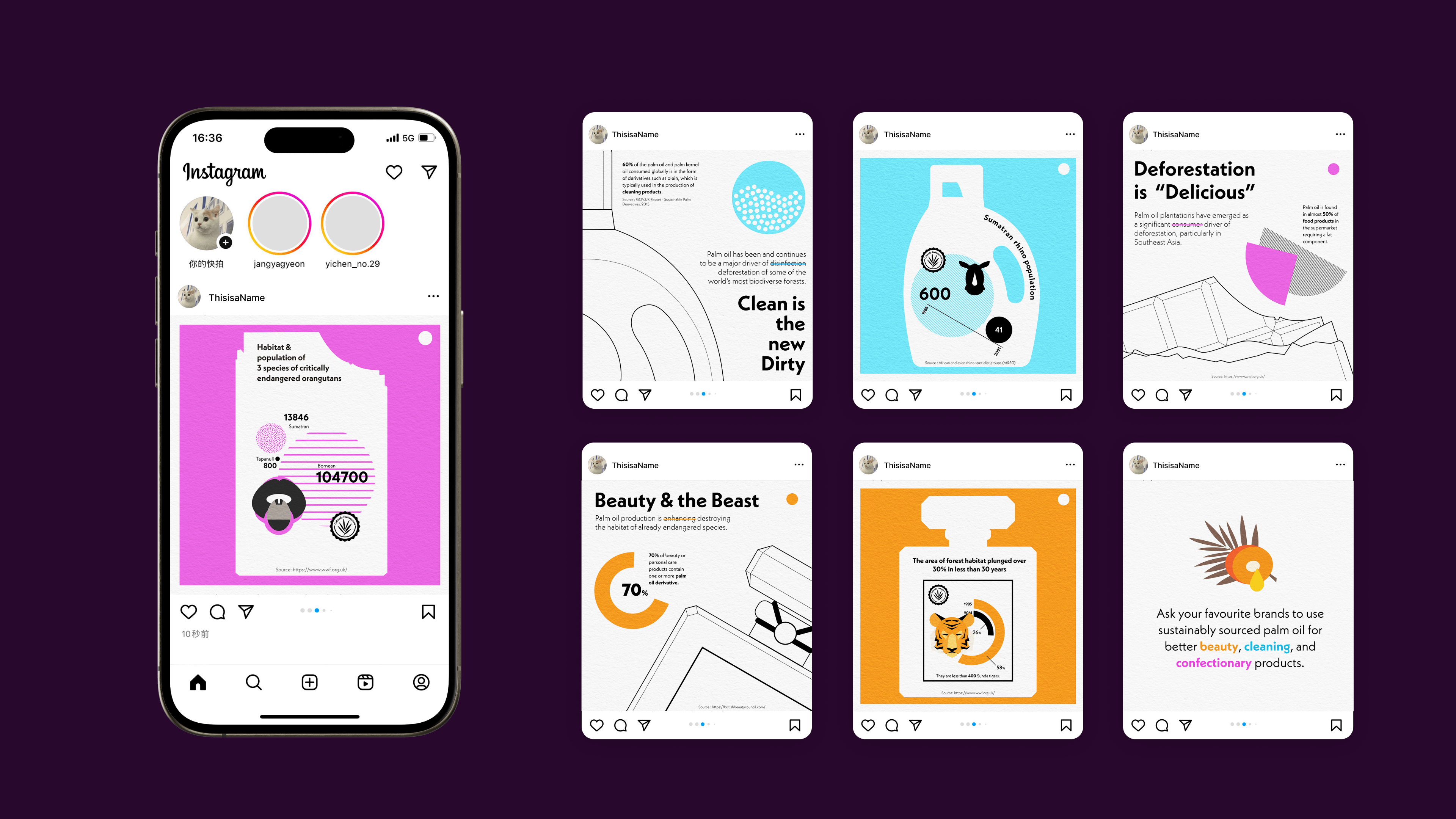
Palm oil has been and continues to be a major driver of deforestation of some of the world’s most biodiverse forests, destroying the habitat of already endangered species like the Orangutan, Sumatran elephant, Sunda tiger and Sumatran rhino.
-- WWF - 7 THINGS TO KNOW ABOUT PALM OIL
Collaborator
Kexin He
Ning Ding
We need to ‘take urgent and significant action to protect and prevent the extinction of threatened species’ according to the SDGs. But what animal species are threatened? Does it depend on where they live? Is there anything we can do about it? The world’s most comprehensive information source on threatened species – The International Union for Conservation of Nature’s (IUCN) Red List – can help us find out.
Using this dataset and insight from Iucnredlist or other trustworthy data or resources, we’d like you to create an Instagram carousel post. The carousel should be 4-6 slides, highlighting the data story you find the most interesting and engaging to be shared for a wide audience.
The data visualization highlights the alarming impact of palm oil production on critically endangered species. By incorporating qualitative data on endangered species affected by palm plantations and the everyday products containing palm oil, it establishes a clear connection between species endangerment and palm oil cultivation. Through bold and striking visuals, this data story aims to raise awareness about how our daily product choices can encourage illegal palm oil plantations, leading to habitat destruction for endangered species. Sharing this content on Instagram helps reach a broad audience, inspiring action to address the growing threat to wildlife from palm oil production.
We gathered qualitative data from organizations like WWF and IUCN on endangered species threatened by palm oil production. Additionally, we collected data on consumer products, identifying brands and industries that use unsustainable palm oil as an ingredient.
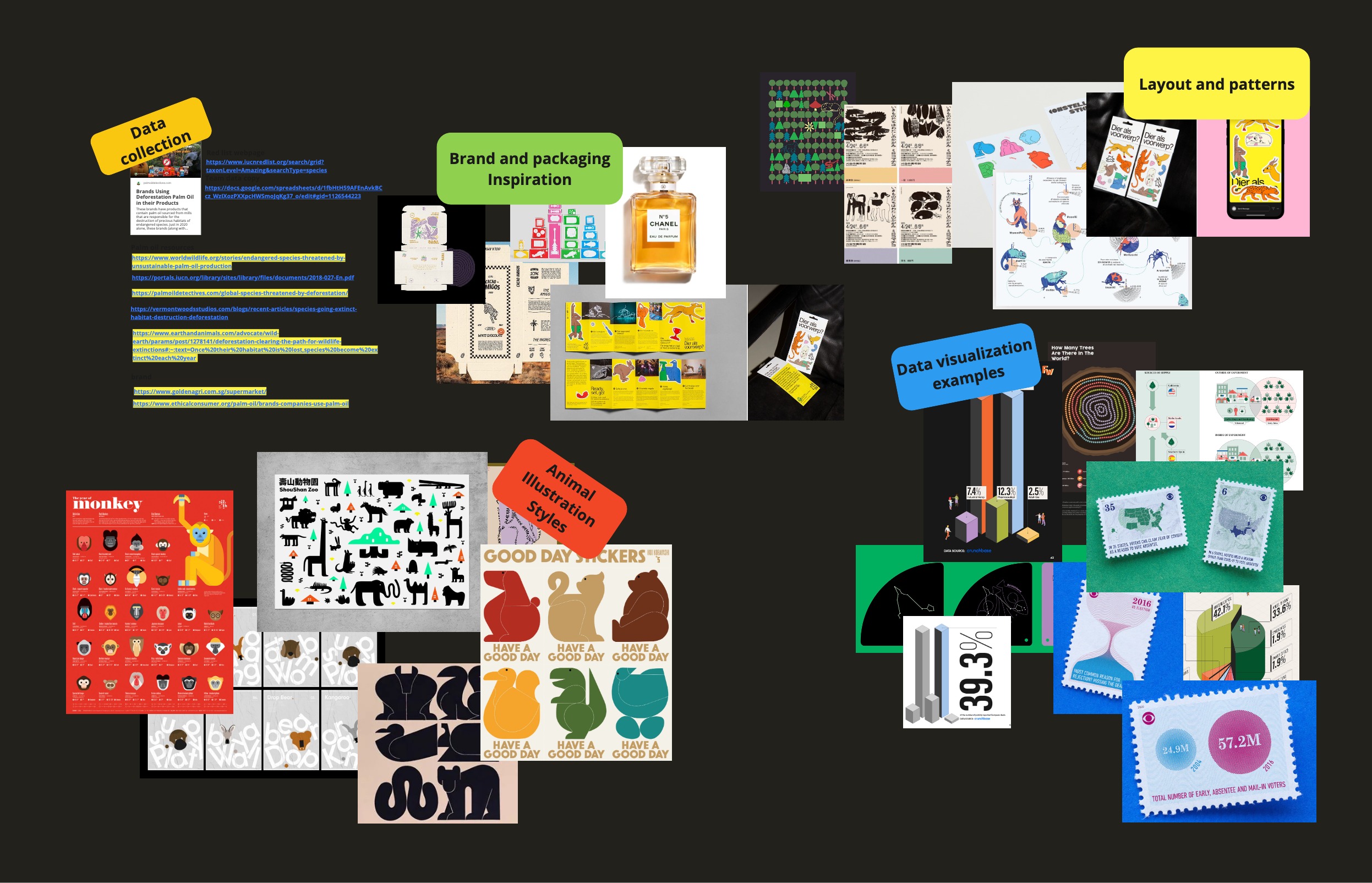
Two major research efforts were conducted. First, we identified key everyday products that use unsustainable palm oil as an ingredient. This helped us understand and illustrate the connection between these products, habitat loss, and endangered species.
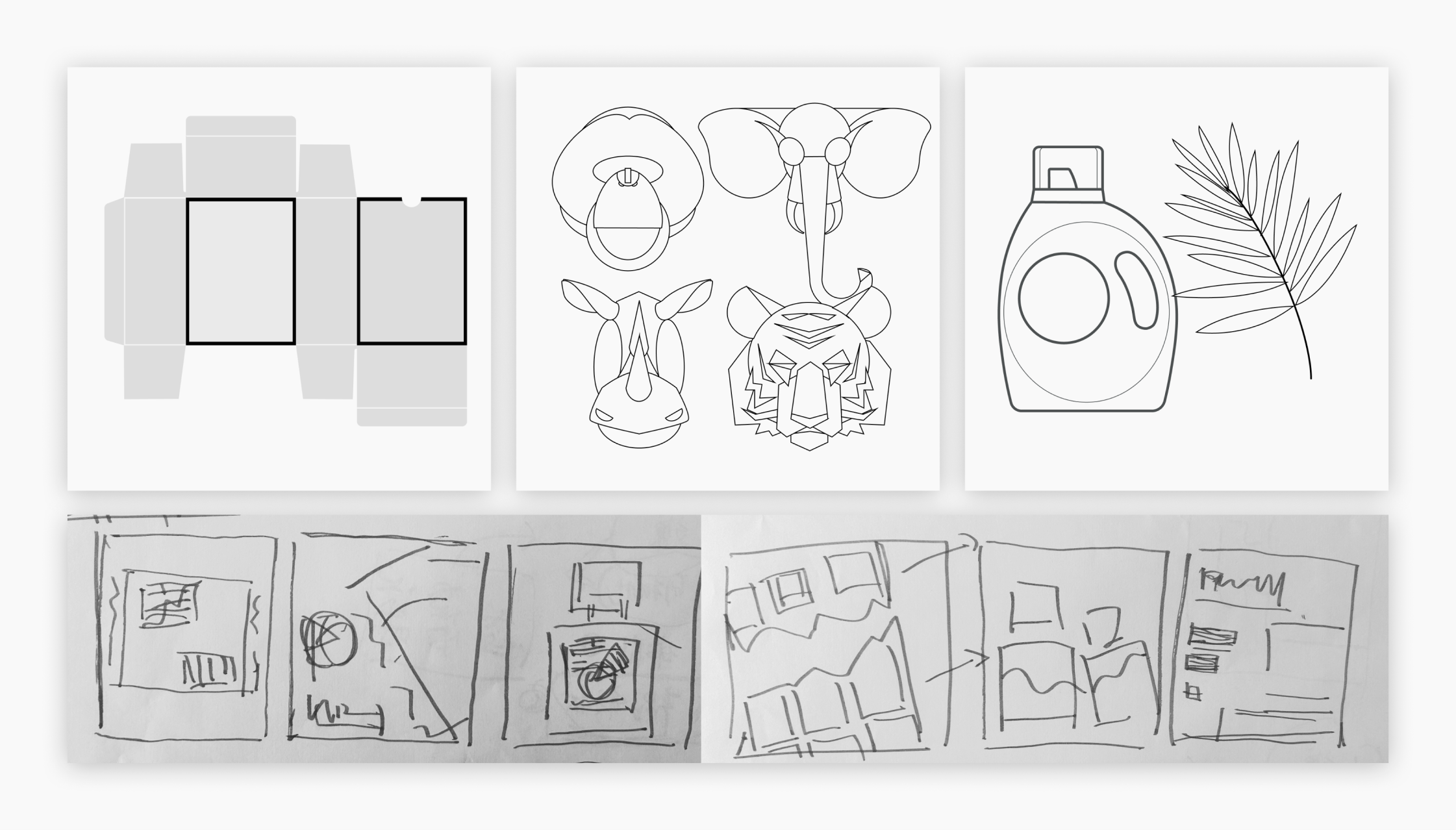
Second, we conducted visual research to explore visual language, patterns, and styles that could effectively convey our concept.
Despite my collaborators' fantastic work on illustrations and visual concepts, my initial iterations in this exploration did not succeed. However, these failures provided valuable insights for the team, enhancing our understanding of how to refine our ideas and visual elements. This process ultimately offered clear guidelines that helped the team achieve a better solution in the end.
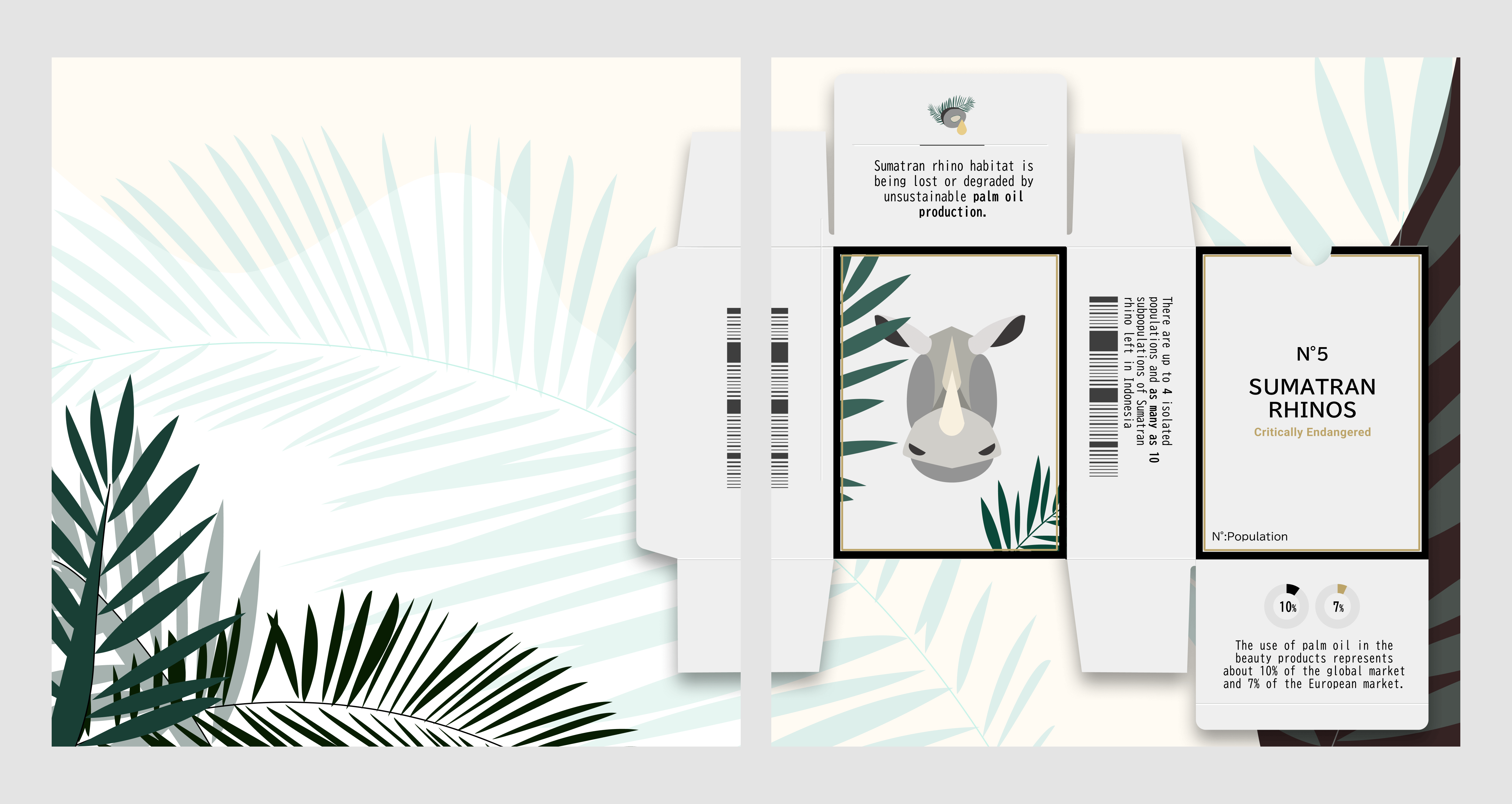
The first iteration aimed to connect famous brands that use palm oil as an ingredient with the endangered animals affected by its production. However, we quickly realized that focusing on making the audience recognize these brands required incorporating many of their branding elements. This approach made the design look cluttered and unfocused. The excessive number of elements caused the main data visualization to become too small and hard to discern within the format of an Instagram post.
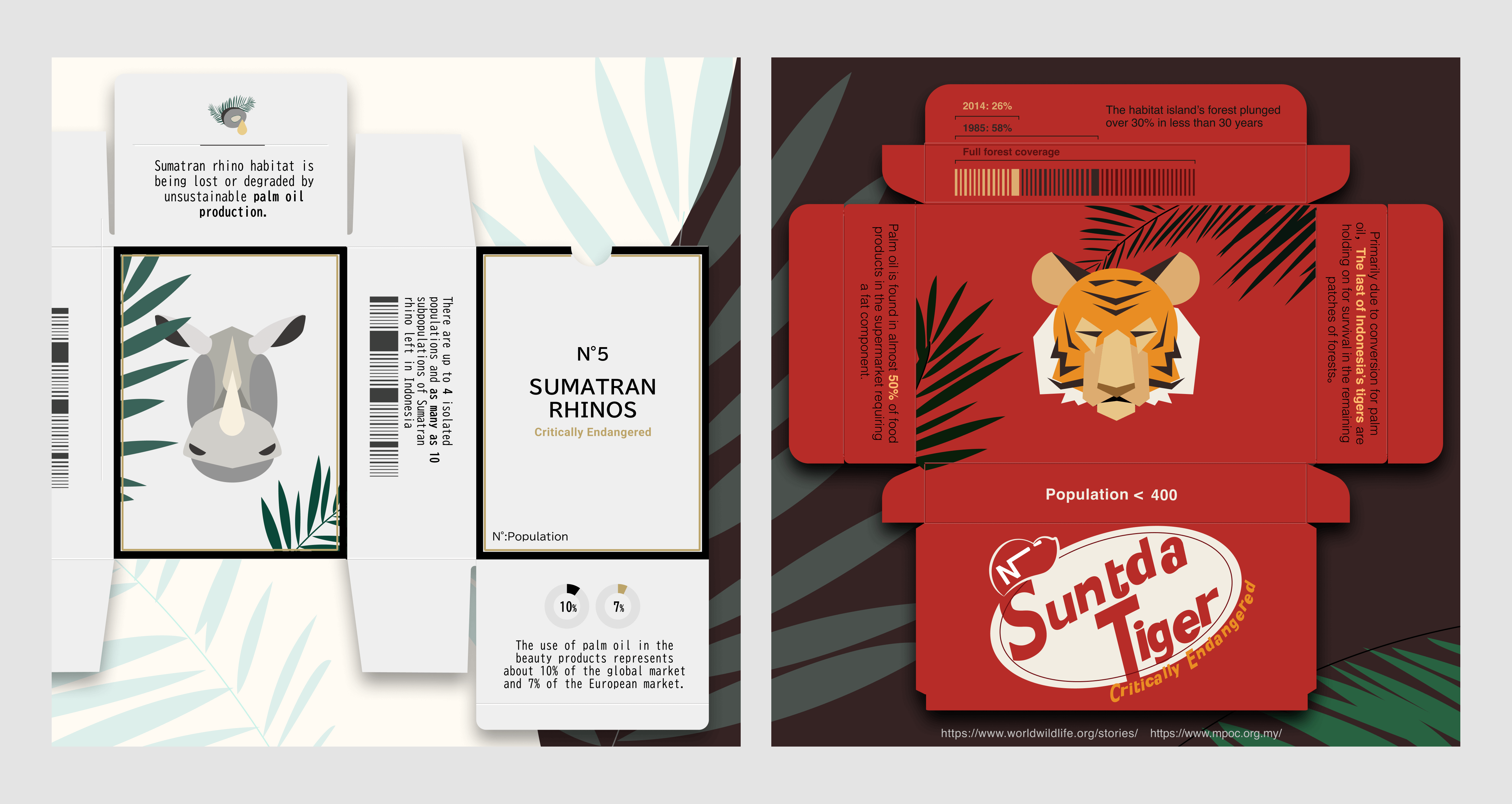
Despite my collaborators' fantastic work on illustrations and visual concepts, my initial iterations in this exploration did not succeed. However, these failures provided valuable insights for the team, enhancing our understanding of how to refine our ideas and visual elements. This process ultimately offered clear guidelines that helped the team achieve a better solution in the end.
After the first failed attempt, the team decided to take a different direction. We simplified the visual elements, moving from specific brands and products to using simple shapes to represent general product types:
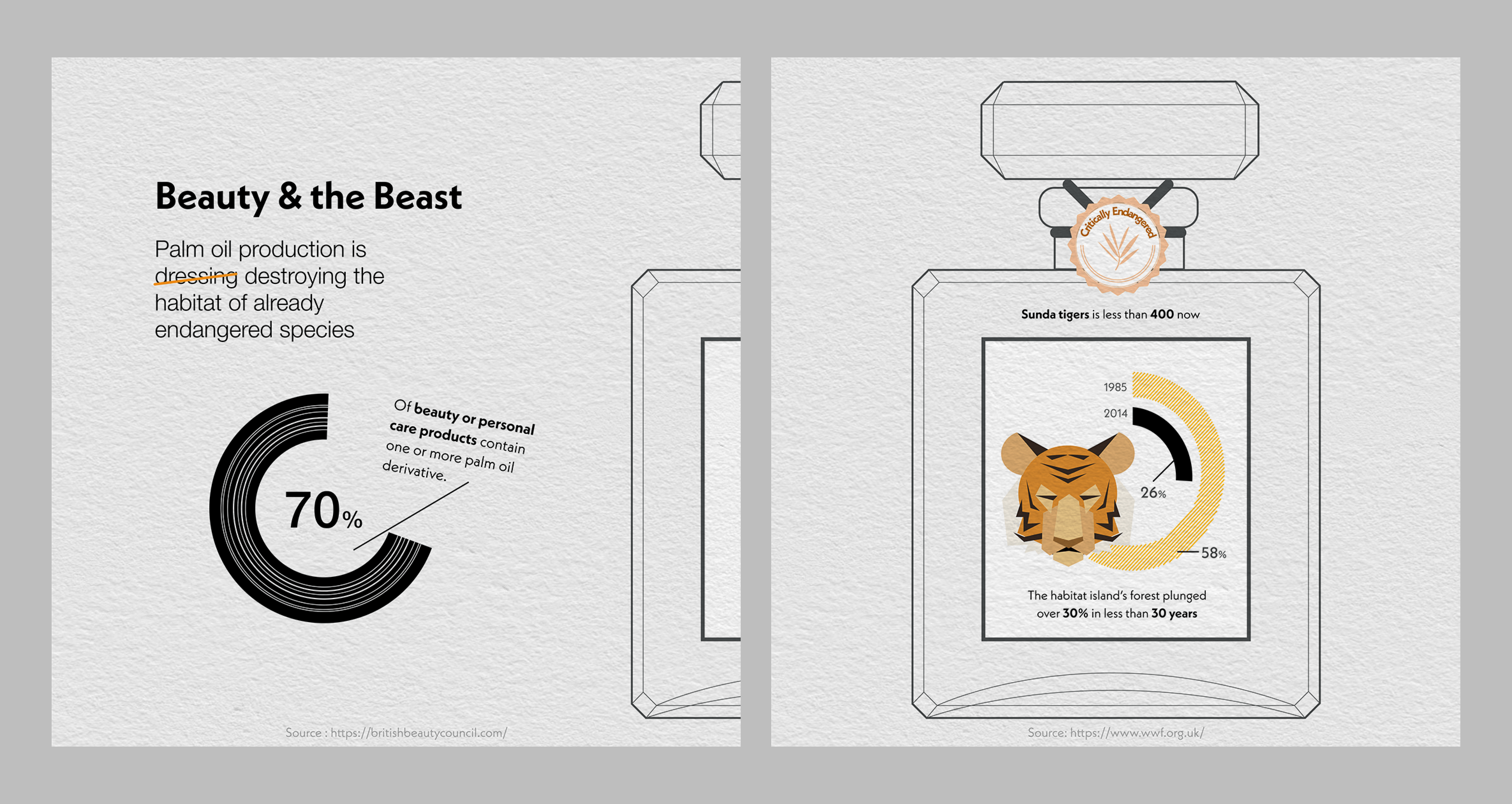
Although this was a brilliant idea from my teammates, my design attempt failed again. In my opinion, the lack of color usage failed to highlight our product shapes, making the animal illustrations and data visualizations less attractive. A post like this could easily be swiped away without capturing the audience's attention:
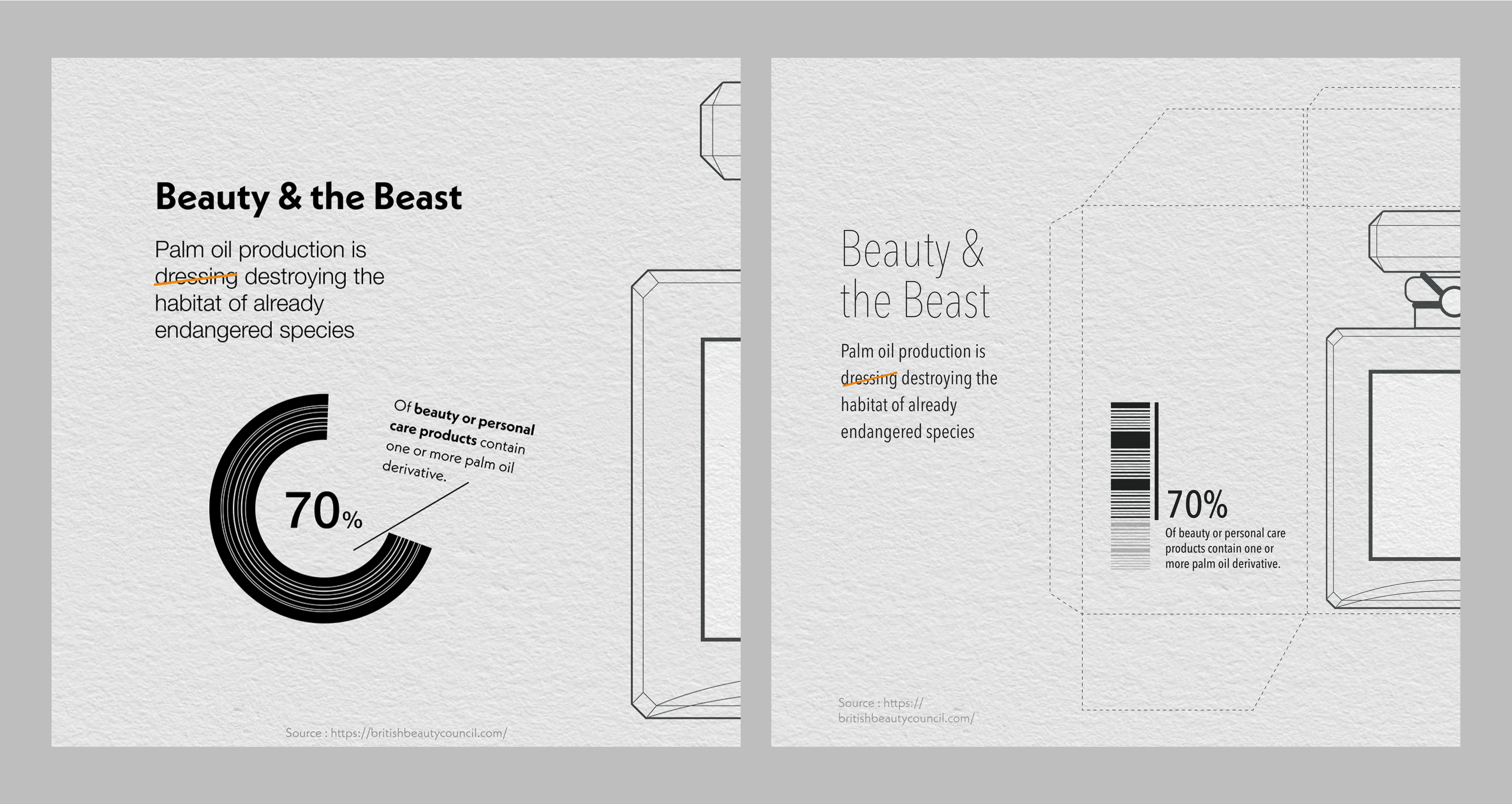
Teamwork reached its pinnacle when I encountered numerous failed iterations. Collaborators proposed a simple yet effective solution: infusing bold and vivid colors into the design, adopting more creative layouts, and enhancing the readability of data visualizations:



Despite encountering numerous failed design iterations throughout the project, these setbacks ultimately contributed to the team's success. This process underscores the positive nature of overcoming challenges, which is a common experience for designers. It serves as a testament to the power of teamwork, illustrating how mutual support and collaboration can lead to achieving excellent results in the end.